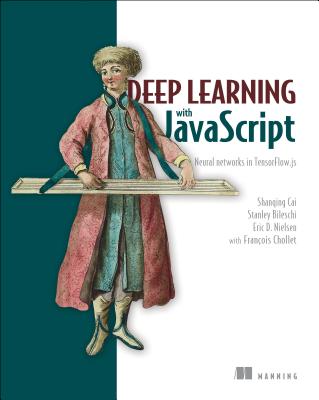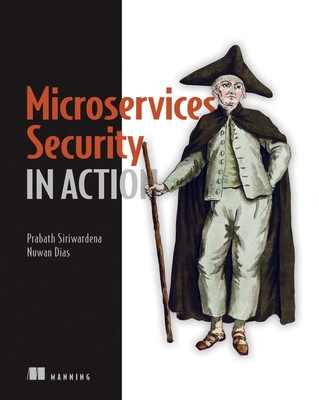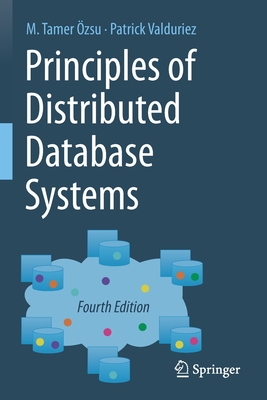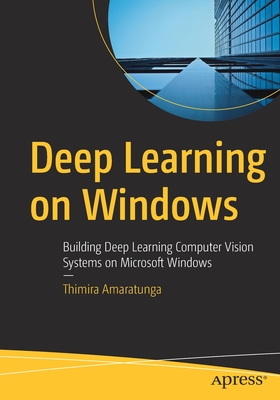Building a Future-Proof Cloud Infrastructure: A Unified Architecture for Network, Security and Storage Services (Paperback)
暫譯: 構建未來可持續的雲端基礎架構:網路、安全性與儲存服務的統一架構 (平裝本)
Gai, Silvano
- 出版商: Addison Wesley
- 出版日期: 2020-01-31
- 售價: $1,998
- 貴賓價: 9.5 折 $1,898
- 語言: 英文
- 頁數: 272
- 裝訂: Quality Paper - also called trade paper
- ISBN: 013662409X
- ISBN-13: 9780136624097
-
相關分類:
虛擬化技術 Virtualization
-
相關翻譯:
構建分佈式服務雲架構:網絡、安全和存儲服務 (簡中版)
立即出貨 (庫存=1)
買這商品的人也買了...
-
 Arduino 官方正版 Genuino 101
Arduino 官方正版 Genuino 101$1,700$1,700 -
 Raspberry Pi 3 Model B+ (UK製)
Raspberry Pi 3 Model B+ (UK製)$4,620$4,389 -
 JVM Performance Engineering: Inside OpenJDK and the HotSpot Java Virtual Machine (Paperback)
JVM Performance Engineering: Inside OpenJDK and the HotSpot Java Virtual Machine (Paperback)$1,980$1,881 -
 晉昇軟體最高殿堂:Jenkins2 持續整合大師之路
晉昇軟體最高殿堂:Jenkins2 持續整合大師之路$600$474 -
 $1,320Deep Learning with JavaScript: Neural Networks in Tensorflow.Js
$1,320Deep Learning with JavaScript: Neural Networks in Tensorflow.Js -
 JavaScript 技術手冊
JavaScript 技術手冊$560$420 -
 $1,584Microservices Security in Action
$1,584Microservices Security in Action -
 Principles of Distributed Database Systems, 4/e (Paperback)
Principles of Distributed Database Systems, 4/e (Paperback)$2,790$2,651 -
 $2,280Parallel and High Performance Computing (Paperback)
$2,280Parallel and High Performance Computing (Paperback) -
 $2,070Multithreaded JavaScript: Concurrency Beyond the Event Loop
$2,070Multithreaded JavaScript: Concurrency Beyond the Event Loop -
 Structure and Interpretation of Computer Programs: JavaScript Edition (Paperback)
Structure and Interpretation of Computer Programs: JavaScript Edition (Paperback)$2,680$2,546 -
 Understanding Distributed Systems : What every developer should know about large distributed applications, 2/e (Paperback)
Understanding Distributed Systems : What every developer should know about large distributed applications, 2/e (Paperback)$1,650$1,568 -
 建構機器學習管道|運用 TensorFlow 實現模型生命週期自動化 (Building Machine Learning Pipelines: Automating Model Life Cycles with Tensorflow)
建構機器學習管道|運用 TensorFlow 實現模型生命週期自動化 (Building Machine Learning Pipelines: Automating Model Life Cycles with Tensorflow)$580$458 -
 Mastering API Architecture: Design, Operate, and Evolve Api-Based Systems (Paperback)
Mastering API Architecture: Design, Operate, and Evolve Api-Based Systems (Paperback)$2,166$2,052 -
 OAuth 2.0 從入門到實戰:利用驗證和授權守護 API 的安全
OAuth 2.0 從入門到實戰:利用驗證和授權守護 API 的安全$600$468 -
 $2,233Functional and Concurrent Programming: Core Concepts and Features
$2,233Functional and Concurrent Programming: Core Concepts and Features -
 $1,767Functional Design: Principles, Patterns, and Practices (Paperback)
$1,767Functional Design: Principles, Patterns, and Practices (Paperback) -
 OpenTelemetry 入門指南:建立全面可觀測性架構(iThome鐵人賽系列書)【軟精裝】
OpenTelemetry 入門指南:建立全面可觀測性架構(iThome鐵人賽系列書)【軟精裝】$750$585 -
 Learning Systems Thinking: Essential Nonlinear Skills and Practices for Software Professionals (Paperback)
Learning Systems Thinking: Essential Nonlinear Skills and Practices for Software Professionals (Paperback)$1,995$1,890 -
 Collaborative Software Design: How to Facilitate Domain Modeling Decisions
Collaborative Software Design: How to Facilitate Domain Modeling Decisions$1,750$1,663 -
 內行人才知道的機器學習系統設計面試指南 (Machine Learning System Design Interview)
內行人才知道的機器學習系統設計面試指南 (Machine Learning System Design Interview)$680$537 -
 Mastering Opentelemetry and Observability: Enhancing Application and Infrastructure Performance and Avoiding Outages
Mastering Opentelemetry and Observability: Enhancing Application and Infrastructure Performance and Avoiding Outages$2,100$1,995 -
 Full Stack JavaScript Strategies: The Hidden Parts Every Mid-Level Developer Needs to Know (Paperback)
Full Stack JavaScript Strategies: The Hidden Parts Every Mid-Level Developer Needs to Know (Paperback)$2,062$1,953 -
 Beyond Vibe Coding: From Coder to Ai-Era Developer (Paperback)
Beyond Vibe Coding: From Coder to Ai-Era Developer (Paperback)$2,280$2,160 -
 Building Event-Driven Microservices: Leveraging Organizational Data at Scale
Building Event-Driven Microservices: Leveraging Organizational Data at Scale$2,450$2,328
相關主題
商品描述
Cloud architectures are leading to radical changes in data center organization, with multi-tenancy becoming ubiquitous in public, private, and hybrid clouds. To future-proof evolving cloud-based infrastructures, network architects are turning to Distributed Services Platforms.
In Building a Future-proof Cloud Infrastructure , network pioneer Silvano Gai shows how to implement Distributed Services Platforms with multiple service modules in diverse hardware. Gai shows how to provide essential shared services such as segment routing, NAT, firewall, micro-segmentation, load balancing, SSL/TLS termination, VPNs, RDMA, and storage -- including storage compression and encryption. He demonstrates how distributing service modules near applications enables very high performance, low latency, low jitter, deep observability, and rapid troubleshooting, combining the performance benefits of hardware with the exceptional flexibility of programmable software.
Focusing on business benefits throughout, Gai places Distributed Services Platforms in the context of current trends in network and cloud architecture and virtualization. He compares four leading architectures: Sea of Processors, FPGAs, ASIC, and P4, reviewing the advantages and tradeoffs of each, and illuminating key concepts with intuitive illustrations. He also previews P4 extensions that may offer significant value. By the time readers have finished, they'll know how to evaluate solutions, ask pertinent questions, and plan the best Distributed Services Platform strategies for their own environments.
商品描述(中文翻譯)
雲端架構正在對資料中心的組織產生根本性的變化,多租戶在公共、私有和混合雲中變得無處不在。為了未來-proof 不斷演變的雲端基礎設施,網路架構師正轉向分散式服務平台(Distributed Services Platforms)。
在《建立未來-proof 的雲端基礎設施》中,網路先驅 Silvano Gai 展示了如何在多樣化的硬體中實現具有多個服務模組的分散式服務平台。Gai 展示了如何提供基本的共享服務,例如段路由(segment routing)、NAT、防火牆、微分段(micro-segmentation)、負載平衡、SSL/TLS 終止、VPN、RDMA 和儲存,包括儲存壓縮和加密。他演示了如何將服務模組分佈在應用程式附近,以實現非常高的性能、低延遲、低抖動、深度可觀察性和快速故障排除,結合硬體的性能優勢與可程式化軟體的卓越靈活性。
Gai 在整個過程中專注於商業利益,將分散式服務平台置於當前網路和雲端架構及虛擬化的趨勢背景中。他比較了四種主要架構:處理器海(Sea of Processors)、FPGA、ASIC 和 P4,回顧每種架構的優勢和權衡,並用直觀的插圖闡明關鍵概念。他還預覽了可能提供顯著價值的 P4 擴展。當讀者完成閱讀時,他們將知道如何評估解決方案、提出相關問題,並為自己的環境規劃最佳的分散式服務平台策略。
作者簡介
Silvano Gai, now a Fellow with Pensando Systems, has 35+ years of experience in computer engineering and networking. The author of several books and technical publications on computer networking, as well as multiple Internet Drafts and RFCs, he is responsible for 50 issued patents. He spent seven years as a full professor of Computer Engineering, tenure track, at Politecnico di Torino, Italy, as well as seven years as a researcher at the CNR (Italian National Council for Scientific Research). For twenty years he has been a Cisco Fellow, architecting the Cisco Catalyst family of network switches, the Cisco MDS family of storage networking switches, the Nexus family of data center switches, and the Cisco Unified Computing System (UCS).
作者簡介(中文翻譯)
Silvano Gai 現在是 Pensando Systems 的研究員,擁有超過 35 年的計算機工程和網絡經驗。他是多本有關計算機網絡的書籍和技術出版物的作者,並且參與了多個 Internet Draft 和 RFC 的撰寫,擁有 50 項已授權專利。他在意大利都靈理工大學擔任計算機工程的全職教授(終身職)七年,並在意大利國家科學研究委員會 (CNR) 擔任研究員七年。在過去的二十年中,他一直是 Cisco 的研究員,負責設計 Cisco Catalyst 系列網絡交換機、Cisco MDS 系列存儲網絡交換機、Nexus 系列數據中心交換機以及 Cisco 統一計算系統 (UCS)。































